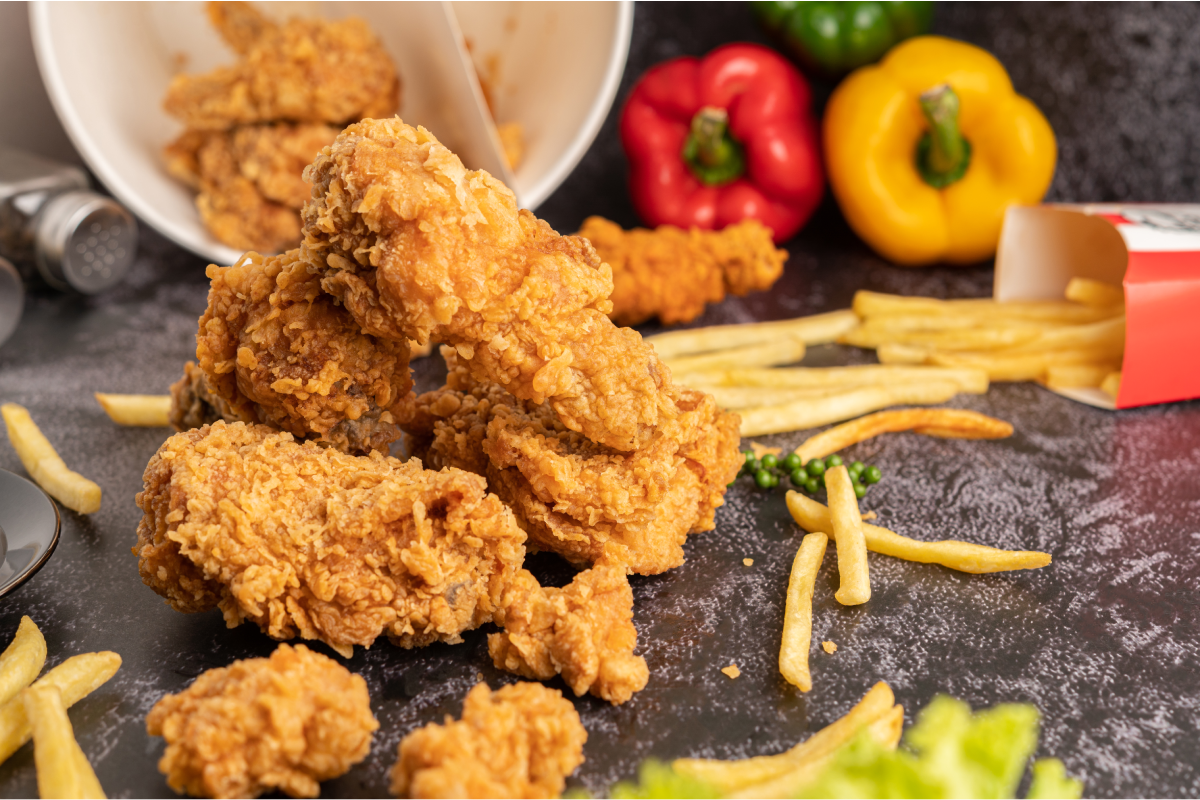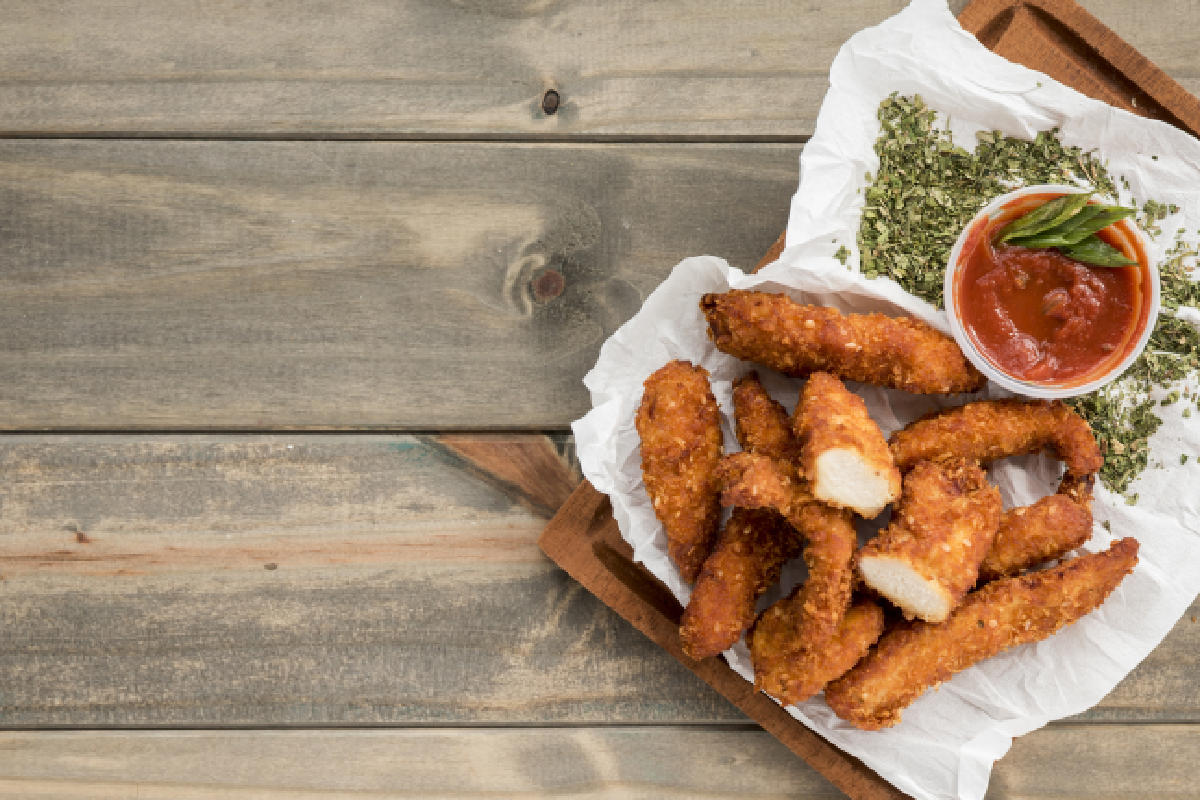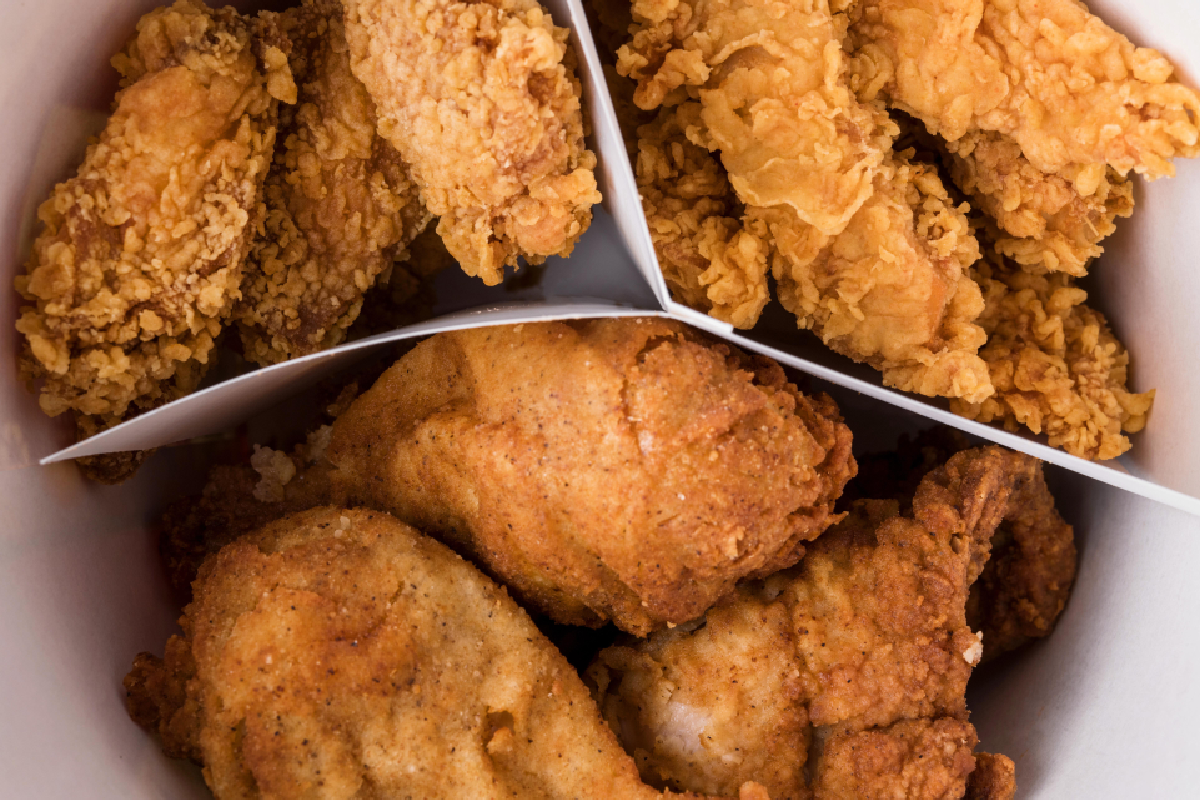For those who are looking for dairy-based alternatives to buttermilk that still provide the desired tanginess and tenderizing properties in recipes, there are several options you can use. These alternatives are particularly useful when you want to maintain the dairy content for flavor, texture, or nutritional reasons. Here are some dairy-based substitutes for buttermilk:
1. Yogurt and Milk
Mixing plain yogurt with a bit of milk can create a consistency and acidity similar to buttermilk. The general ratio is 3 parts yogurt to 1 part milk. This mixture is excellent for baking and marinating meat, offering a similar tang and ability to tenderize.
2. Sour Cream and Water or Milk
Sour cream, thinned with water or milk, serves as a great buttermilk alternative. The mixture should be roughly 3 parts sour cream to 1 part liquid. This substitute works well in recipes where buttermilk’s acidity and creaminess are desired, such as in dressings, baked goods, and marinades.
3. Kefir
Kefir is a fermented milk drink with a tangy flavor, similar to buttermilk. It can be used in a 1:1 ratio as a substitute for buttermilk in almost any recipe. Its natural acidity and probiotic content also make it a healthy option.
4. Cream of Tartar and Milk
Adding 1 and 3/4 teaspoons of cream of tartar to 1 cup of milk can mimic the acidity of buttermilk. Stir and let it sit for a few minutes before using. This option is especially useful in baking.
5. Quark Thinned with Milk
Quark is a type of fresh dairy product that resembles sour cream or yogurt. Thinning quark with a little milk until you achieve the desired consistency can make a suitable buttermilk substitute, especially in baking and for dressings.
6. Crème Fraîche and Milk
Crème fraîche, mixed with a bit of milk to thin it out, can also be used as a buttermilk substitute. The mild tanginess and rich texture of crème fraîche make it suitable for cakes, pancakes, and other recipes requiring buttermilk.
When choosing a dairy-based alternative to buttermilk, consider the recipe’s requirements and the substitute’s texture and acidity. Some options may work better in certain recipes than others, so experimentation might be necessary to achieve the best results.Discover the versatility of yogurt in cooking with our article on 5 Savory Substitutes for Buttermilk.
Preparing Your Chicken for Frying Without Buttermilk

Preparing your chicken for frying without buttermilk requires alternative methods to achieve a similar tenderness, flavor, and moisture content that buttermilk provides. Here are several steps and tips for preparing your chicken for frying using different ingredients:
1. Choose an Alternative Marinade
- Acidic Marinades: Use a mixture of vinegar or lemon juice with water, spices, and herbs to marinate the chicken. The acidity helps tenderize the meat similarly to buttermilk. For every cup of water, use about 2 tablespoons of vinegar or lemon juice.
- Dairy-Based Marinades: If you’re avoiding buttermilk due to preference rather than dairy restrictions, you can use plain yogurt or sour cream diluted with a little water. These dairy products offer the tanginess and tenderizing properties of buttermilk.
- Soda Marinade: Carbonated beverages like sprite, ginger ale, or even beer can tenderize the chicken due to their mild acidity and carbonation.
2. Season Your Chicken Well
- Before marinating, season the chicken pieces with salt, pepper, and any other spices you prefer. This not only adds flavor but also helps in the tenderizing process.
- Allow the chicken to marinate for at least 30 minutes, though several hours or overnight is preferable for maximum flavor and tenderness.
3. Dredging and Breading
- After marinating, remove the chicken pieces from the marinade and let excess liquid drip off.
- Prepare your dredging mixture. This could be a simple combination of flour, cornstarch, and seasonings or a more complex blend depending on your recipe. Some people add a pinch of baking soda to the flour mixture to promote browning.
- For a crisper crust, you can first dip the chicken in a wash (this can be beaten eggs, a mixture of water and flour, or even the marinade itself) before coating it in the flour mixture.
- Ensure each piece is thoroughly coated with the flour mixture for an even and crispy outer layer.
4. Resting the Breaded Chicken
- Let the breaded chicken sit on a wire rack or a plate for about 10 to 15 minutes before frying. This step helps the coating adhere better to the chicken, reducing the chances of it falling off during frying.
5. Frying the Chicken
- Heat your frying oil to a temperature of 350°F (175°C) to 375°F (190°C). Use a deep-fry thermometer to ensure accuracy.
- Fry in batches to avoid overcrowding, which can lower the oil’s temperature and result in greasy chicken.
- Cook until the chicken is golden brown, crispy, and cooked through. The internal temperature should reach 165°F (74°C).
6. Draining and Serving
- Once fried, let the chicken drain on a wire rack set over a baking sheet or on paper towels to remove excess oil.
- Serve hot for the best texture and flavor, accompanied by your favorite sides and sauces.
By following these steps and using an alternative marinade, you can prepare delicious fried chicken without buttermilk that still boasts tenderness, moisture, and a flavorful crust.
Recipes Featuring Alternative Marinades

Exploring alternative marinades can bring a delightful twist to traditional recipes, especially when substituting buttermilk in fried chicken. Below are two recipes featuring different marinades, providing a unique flavor profile and tenderizing effect similar to buttermilk.
1. Lemon and Herb Marinade Fried Chicken
Ingredients:
- 4 chicken thighs and 4 drumsticks
- 1 cup water
- 2 tablespoons lemon juice
- 1 tablespoon salt
- 2 teaspoons garlic powder
- 1 teaspoon black pepper
- 1 teaspoon dried thyme
- 1 teaspoon dried rosemary
- 2 cups all-purpose flour
- 1 teaspoon paprika
- Oil for frying
Marinade Preparation:
- In a large bowl, whisk together water, lemon juice, salt, garlic powder, black pepper, thyme, and rosemary.
- Add the chicken pieces to the marinade, ensuring they are fully submerged. Cover and refrigerate for at least 4 hours, or overnight for best results.
Cooking Instructions:
- Remove chicken from the marinade and let excess liquid drip off.
- In a separate bowl, mix the flour and paprika.
- Dredge each piece of chicken in the flour mixture until well coated.
- Heat oil in a deep fryer or a large, deep skillet to 350°F (175°C).
- Fry the chicken in batches, being careful not to overcrowd the pan. Cook until golden brown and the internal temperature reaches 165°F (74°C), about 15 to 18 minutes for thighs and drumsticks.
- Drain on a wire rack or paper towels before serving.
2. Soy Sauce and Ginger Marinade Fried Chicken
Ingredients:
- 8 chicken wings or drumettes
- 1/2 cup soy sauce
- 1/4 cup brown sugar
- 2 tablespoons vinegar (rice vinegar or white vinegar)
- 1 tablespoon grated fresh ginger
- 2 cloves garlic, minced
- 1 teaspoon sesame oil
- 2 cups all-purpose flour
- 1 teaspoon ground black pepper
- Oil for frying
Marinade Preparation:
- In a bowl, combine soy sauce, brown sugar, vinegar, grated ginger, minced garlic, and sesame oil. Stir until the sugar dissolves.
- Add the chicken wings to the mixture, ensuring they are well-coated. Marinate in the refrigerator for 2 to 4 hours.
Cooking Instructions:
- Remove chicken from the marinade and let it drain slightly.
- Mix flour and black pepper in a bowl.
- Coat each piece of chicken in the flour mixture thoroughly.
- Heat oil in a deep fryer or large skillet to 350°F (175°C).
- Fry the chicken wings in batches until they are crispy and cooked through, about 10 to 12 minutes.
- Let the fried chicken drain on a wire rack or paper towels.
These recipes showcase how alternative marinades can be used to infuse fried chicken with unique flavors while achieving the desired tenderness and moisture content. Feel free to adjust the ingredients based on personal taste preferences and dietary needs.
Expert Tips for the Perfect Fry
Achieving the perfect fry, especially when it comes to classics like fried chicken, involves a blend of technique, timing, and ingredient selection. Here are expert tips to help you master the art of frying:
1. Choose the Right Oil
- Use oils with a high smoke point to withstand the high temperatures needed for frying without burning. Canola, peanut, and vegetable oils are excellent choices.
- Ensure the oil is fresh to avoid off-flavors in your fried food.
2. Maintain Oil Temperature
- Use a thermometer to keep your oil at the optimal temperature range of 350°F (175°C) to 375°F (190°C). Too low, and your food absorbs excess oil, becoming greasy; too high, and it burns on the outside before cooking through.
- When adding food, do so gently to prevent oil temperature from dropping significantly.
3. Don’t Overcrowd the Pan
- Fry in batches to ensure the oil temperature stays consistent. Overcrowding can lower the oil’s temperature, leading to soggy, oil-laden food.
- Give each piece of food enough space to ensure even cooking and browning.
4. Use a Batter or Breading
- A good batter or breading not only adds flavor and texture but also acts as a barrier, keeping the food moist and tender.
- Allow breaded food to rest for a few minutes before frying. This helps the coating adhere better, preventing it from falling off in the oil.
5. Prep Your Ingredients
- Cut food into uniform sizes for even cooking.
- Dry your food thoroughly before coating. Moisture on the surface can cause the oil to splatter and the coating to become soggy.
6. Frying Technique
- Carefully lower the food into the oil to prevent splashes.
- Don’t move the food around too much at the start of frying. Let it form a crust before stirring or flipping for an even, crisp exterior.
7. Drain Well
- Use a slotted spoon or tongs to remove food from the oil, letting excess oil drip off.
- Drain on a wire rack over a baking sheet. Using paper towels can cause the bottom of the food to steam and become soggy.
8. Season Immediately
- Sprinkle salt or other seasonings on the food as soon as it comes out of the fryer. The heat helps the seasonings stick and enhances flavor.
9. Monitor Oil Quality
- After each batch, skim out any crumbs or bits left in the oil to prevent them from burning and imparting a bitter taste to subsequent batches.
- Dispose of oil properly after frying. If the oil starts to smoke at lower temperatures or has an off odor, it’s time to replace it.
10. Safety First
- Keep a lid or baking soda nearby to extinguish any potential oil fires. Water should never be used as it can cause the oil to splatter and spread flames.
By following these expert tips, you’ll be well on your way to achieving perfectly fried foods, characterized by a crispy exterior, moist interior, and delicious flavor.Enhance your frying skills further by reading our 5 Secrets to Perfect Fried Drumsticks Without Buttermilk.
What Can You Use Instead of Buttermilk to Fry Chicken?
When frying chicken, buttermilk is traditionally used for its ability to tenderize and add a tangy flavor to the meat. If you find yourself without buttermilk or prefer an alternative, there are several options you can use to achieve similar results:
- Milk and Lemon Juice or Vinegar: Mix 1 cup of milk (whole or 2% preferred) with 1 tablespoon of lemon juice or white vinegar. Let it sit for about 5 minutes until the milk slightly curdles. This mixture replicates the acidity and tang of buttermilk.
- Plain Yogurt: Use plain yogurt thinned with a little water or milk to achieve the consistency of buttermilk. Yogurt’s natural acidity and thickness make it a great tenderizer and flavor enhancer.
- Sour Cream: Similar to yogurt, sour cream can be thinned with water or milk to mimic buttermilk. Its creamy texture and acidity are effective for marinating and tenderizing chicken.
- Kefir: A fermented milk drink with a tart flavor, kefir can be used as a 1:1 substitute for buttermilk. Its probiotics and acidity make it an excellent option for marinating chicken.
- Vegan Buttermilk: For a dairy-free alternative, mix 1 cup of plant-based milk (such as almond, soy, or coconut) with 1 tablespoon of apple cider vinegar or lemon juice. Allow it to sit for a few minutes to thicken slightly.
- Cream of Tartar: Mix 1 and 3/4 teaspoons of cream of tartar with 1 cup of milk. This combination can help achieve the slight tang and acidity similar to buttermilk.
Each of these substitutes can be used to marinate and tenderize chicken for frying, offering a similar texture and flavor to those achieved with traditional buttermilk. Choose the one that best suits your dietary needs and flavor preferences.
FAQs
Certainly! Below are some frequently asked questions (FAQs) related to the topic of using alternatives to buttermilk for frying chicken, accompanied by their answers:
- Why do cooks use buttermilk for frying chicken?
Cooks prefer buttermilk for frying chicken because its acidity helps in tenderizing the meat, ensuring it remains juicy and tender during frying. Moreover, buttermilk’s thick consistency aids in getting the flour or breading to stick to the chicken, achieving a crispy exterior.
- Can I substitute buttermilk with low-fat or non-fat milk mixed with lemon juice or vinegar?
Absolutely, mixing low-fat or non-fat milk with lemon juice or vinegar serves as an effective substitute for buttermilk. Nonetheless, whole milk is the preferred choice due to its fat content being closer to that of buttermilk, enhancing the flavor and texture of the fried chicken.
- Will the taste differ when using alternatives to buttermilk?
Although slight taste variations may occur depending on the chosen substitute, these differences are usually minimal once you season and fry the chicken. Every alternative still offers acidity for tenderization and a tangy flavor that’s akin to buttermilk.
- What’s the recommended marination time for chicken in these alternatives?
For optimal results, it’s advisable to marinate the chicken in these alternatives for at least 1 hour. However, extending the marination to 4 hours or overnight can further improve the tenderness and flavor.
- Are these substitutes applicable to any fried chicken recipe?
Indeed, you can use these substitutes in any fried chicken recipe requiring buttermilk. They fulfill the same roles: tenderizing the meat and ensuring the coating sticks to the chicken effectively.
Conclusion
In conclusion, buttermilk has traditionally been the go-to choice for marinating and tenderizing chicken before frying. However, a plethora of alternatives are available that can effectively fulfill the same role. Whether you find yourself without buttermilk, are catering to dietary restrictions, or are keen on exploring new options, a variety of substitutes stand ready to be used. These include milk mixed with lemon juice or vinegar, plain yogurt, sour cream, kefir, vegan buttermilk concocted from plant-based milk, and even cream of tartar blended with milk. Each option is capable of delivering the tender, flavorful, and crispy fried chicken that is widely cherished.
The secret to successfully utilizing these substitutes lies in appreciating their contribution to the culinary process—namely, tenderizing the meat, enriching its flavor, and ensuring the coating adheres properly. Consequently, selecting the substitute that aligns with your specific requirements and adhering to expert frying tips can lead to the creation of scrumptious fried chicken that aligns with your dietary preferences and fulfills your culinary desires.
Moreover, it’s important to acknowledge the minor taste variances these substitutes may introduce and to adjust your seasoning blend as necessary. Through a process of trial and error, discovering the ideal buttermilk alternative for your fried chicken recipe becomes achievable, guaranteeing that the absence of a traditional ingredient never impedes the preparation of this beloved dish.




